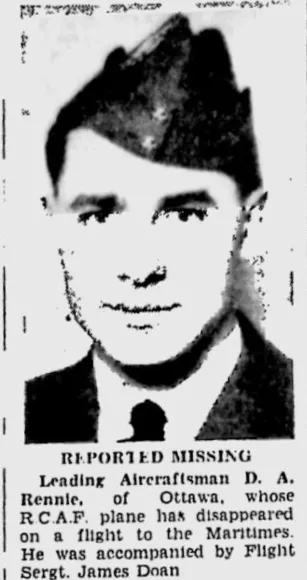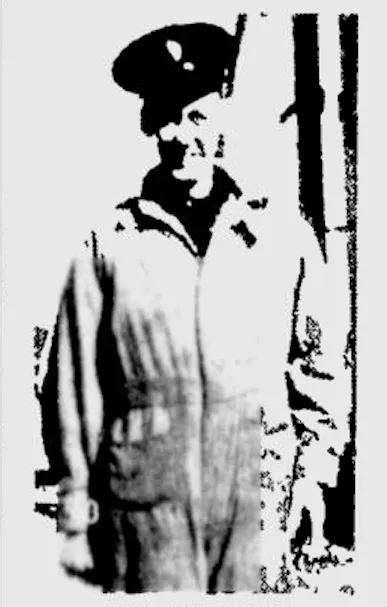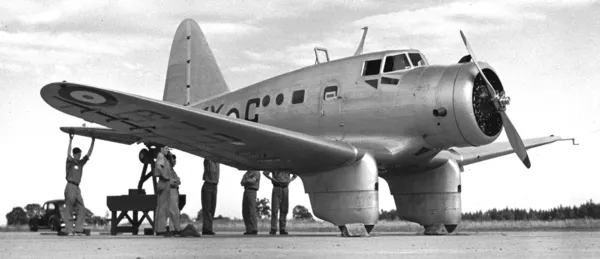8 Bomber Reconnaissance Squadron (Determined To Defend), Sydney, Nova Scotia. Delayed by weather Northrop Delta II aircraft 673 takes off from Megantic, Quebec on the last leg of it's ferry flight. When it does not arrive, and was believed to have crashed into the sea near Sydney, NS, Corporal DA Rennie (RCAF) and Warrant Officer Class 2 JE Doan (RCAF) missing, presumed killed. Search flights at low level were made for 2 months which found nothing (EP Gardiner
The wreckage of the aircraft was found July 9, 1958 in a forested area 40 miles north of Fredericton, NB, but no sign of the missing airmen or their parachutes was found. The wreckage was recovered and is now at the National Aeronautical Collection, Ottawa
Cpl Rennie and Warrant Officer Class 2 Doan were the first RCAF airmen to die in the Second World War



